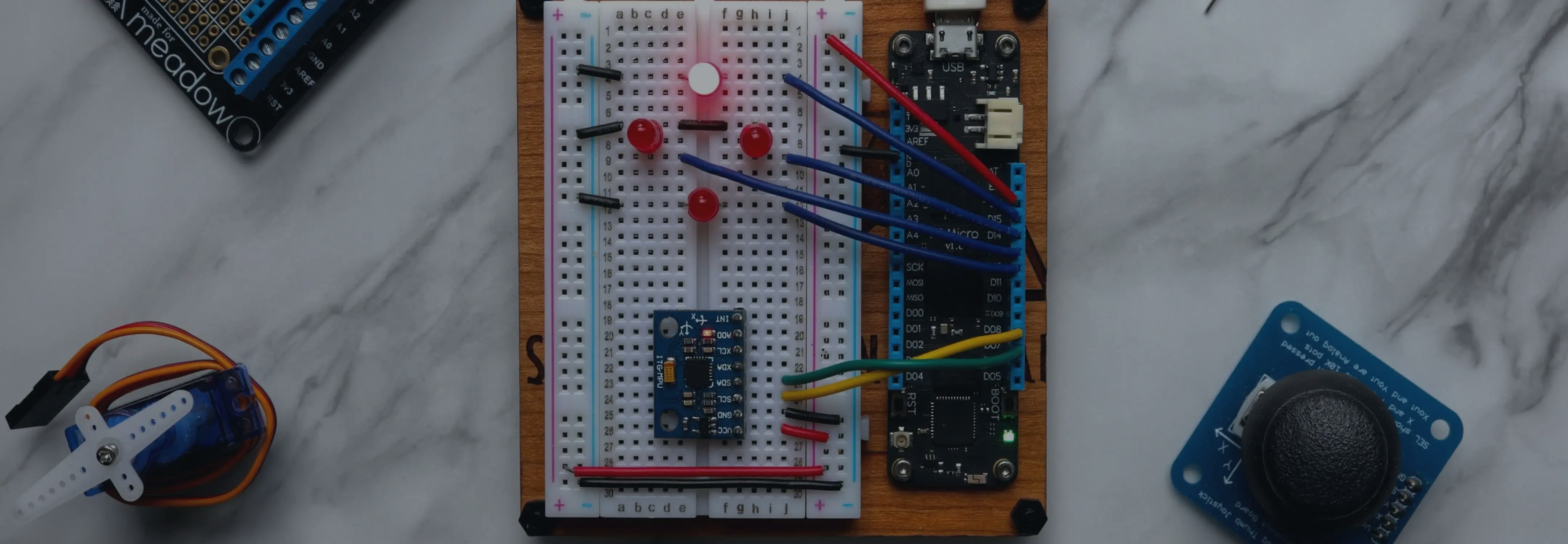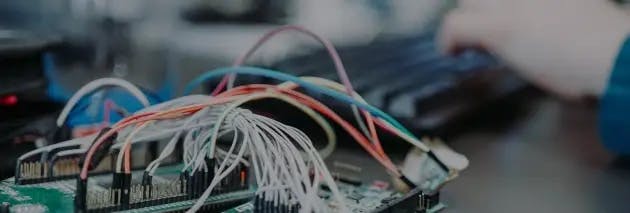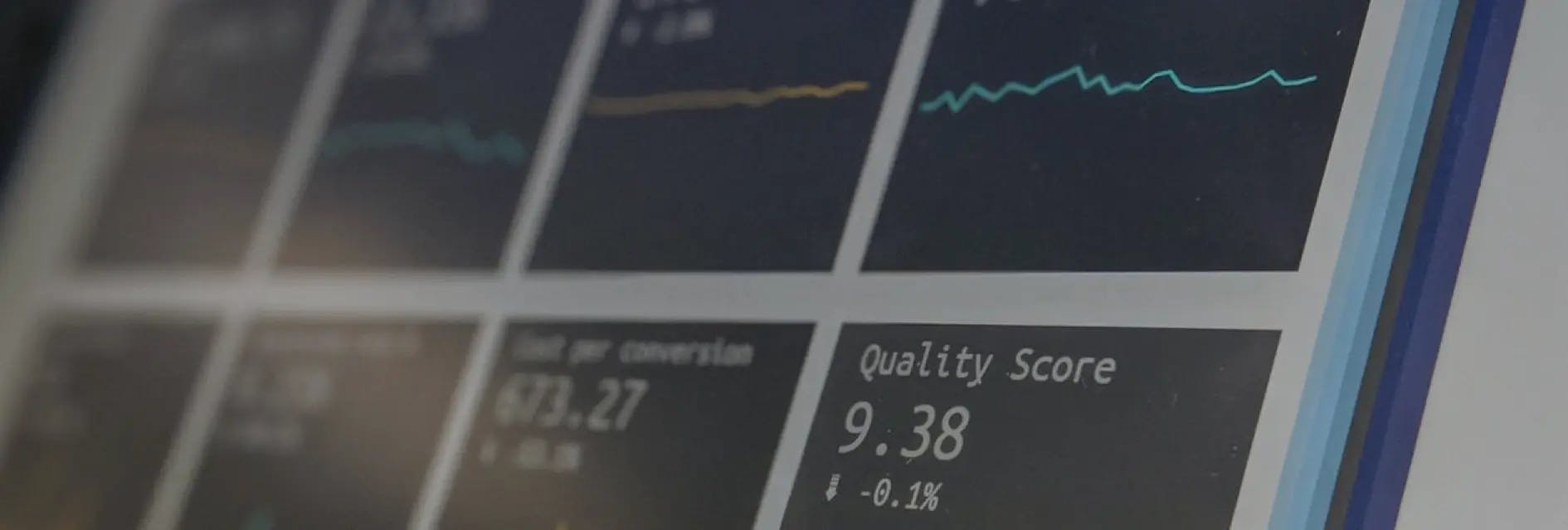
Internent of things and
Its relevance in 2022
Its relevance in 2022
The world is becoming more digital with every next second. Smartphones are now commonplace, tablets have replaced books at schools, and companies are developing cutting-edge technologies like driverless cars.
Everything seems to be connected, especially in business. Whether it`s automated security systems or laptops, the number of devices connected to the network and working together is only growing. According to the latest data, there are a predicted 46 billion connected devices for this year alone, while 31 billion devices will be installed worldwide by the end of the year. There is a special term for this kind of interaction between connected things – Internet of Things (IoT).
What Is Internet of Things?

In a nutshell, the Internet of Things is the concept of connecting any device to the Internet and to other connected devices. Today, IoT usually refers to connected objects equipped with special sensors and software. It allows communication with connected devices IoT applications, industrial machines, and many more. Through the transferring and processing of data packets, devices can perform their functions with little or no need for human interaction.
Of course, the main purpose of data collection is not the data itself, but its usage. Once data is collected and transmitted by IoT devices, it’s analyzed to provide accurate data-based decisions. This is where AI technologies come in handy, enhancing IoT with advanced analytics and ML possibilities.
What Are IoT Applications for Business?

Research shows that IoT devices help streamline the company’s workflow. Employee productivity, remote monitoring, and automated processes are some of the main benefits companies reap from IoT incorporation. But what does IoT look like inside the company? Although different apps are developed to meet individual needs, there are a few common use cases that companies go for:
- Smart locks enable the administration to open the door from their smartphone, allowing an employee to enter the workplace on a day-off;
- Smart thermostats and lights turn on and off at the right time to reduce energy expenses;
- Voice assistants open applications for you to take notes, set reminders, access your calendar, or send emails;
- Connected sensors inside the printers detect low toner levels and automatically make an order for refilling;
- Surveillance cameras monitor workflow or broadcast content on the Internet via embedded devices.
What is IIoT (Industrial Internet of Things)?

For most IoT solutions, end users are typically people. Thus, the commonest apps include voice assistants, geolocation apps, or home automation devices. However, this technology is widely used in industrial settings as well, which is called Industrial IoT.
Every new insight demonstrates that IIoT systems provide companies with a competitive edge as they increase resilience and efficiency in business operations.
This subset of the Internet of Things relies on the same underlying technologies. Still, its primary aim is to automate and improve efficiency in the entire connected organization, not the individual user.
In IIoT networks, data collection and control is just one of the steps of a more complicated process. To maximize value to the organization, IoT systems process data with AI and ML to provide accurate insights. The information obtained is used to improve transparency, optimize workflows and automated tasks.
Key Benefits from IIoT Solutions

Every new insight demonstrates that IIoT systems provide companies with a competitive edge as they increase resilience and efficiency in business operations. The major aspects conducive to increased competitiveness include:
Increased Flexibility
IoT allows companies to respond promptly to opportunities and risks. The connected devices both transmit data and process it to adjust and optimize workflows to a new environment.
Advanced Equipment Performance
IoT machines are constantly transmitting performance data, which shows the need for predictive maintenance. McKinsey statistics prove that such predictive maintenance, as a rule, reduces equipment downtime by up to 50% and prolongs equipment life by up to 40%.
Growth in Efficiency
The collected IoT data is completely objective. Applying advanced analytics to this type of data allows companies to constantly receive recommendations and improved instructions to update processes, optimize tasks, and increase efficiency.
Improved Labor Safety
Among other possibilities of IoT, connected things can issue alerts via wearables or monitor current workflow patterns to revamp manufacturing areas and warehouses, which improves safety and ergonomics.
Quality Customer Service
Industrial IoT networks connect the company’s devices and integrate customer experience and user feedback. Such integration upgrades the quality of interaction with customers, transparency, and personalization of logistics. It becomes easier to take into account customer preferences during the production process and the development of new products.
What Industries Can Benefit from IoT?

The key aspect that determines the necessity for an organization to deploy IoT technologies is its need for sensor devices. Different industries demonstrate this need to different degrees and in different ways. That’s why, IoT-based applications may be embedded to perform numerous functions:
Retail
Retailers collect IoT data and apply analytics (including AI) to monitor in real time, understand behaviors and preferences, and, as a result, deliver customized offers. In retail, IoT enables companies to cut down costs and advance customer experience with the use of digital posters, to track customer interaction, manage inventory, and deploy smart vending machines.
More and more department stores are introducing cash registers without cashiers, cameras that recognize the emotions of customers, VR and AR to tell customers more about the product.
Manufacturing
In factories, IoT systems integrate all the stages, from the supply chain to delivery, to provide a consistent view of the entire workflow. Advanced IoT sensors on factory machines or in warehouses, as well as big data analytics and predictive modeling, can predict and prevent maintenance issues, improve production quality, reduce warranty costs, increase productivity, and improve customer experience.
Healthcare
IoT-based monitors and wearables assist healthcare specialists in delivering quality medical assistance and staying connected to their patients. The received sensor data allows doctors to get a clearer picture of patients` health by tracking their condition, sleep, exercise, and other habits. It results in a more comprehensive approach to diagnosis, treatment, and overall patient well-being.
Logistics
IoT cuts down transportation expenses and reduces the impact of the human factor to the minimum. Thanks to IoT technology, the delivery of goods from production centers or warehouses to stores is much more predictable, which is important for both the end consumer and the business.
Besides, logistics companies can track where the car is located or when it’s time to drive up for loading. This sensor data can also be leveraged to combine shipments, minimize losses, and speed up delivery.
Public Sector
Boundaries of IoT aren’t limited to private businesses. IoT-based applications are used to solve many public problems – traffic congestion, interaction with city services, public safety and security. Smart cities often embed IoT sensors in their infrastructure such as streetlights, which can help reduce lighting costs significantly.
City transport with movement sensors, garbage cans with filling sensors, planning of transport routes based on people’s movement around the city, video surveillance – all this makes infrastructure more efficient, enhances public safety, and streamlines service delivery.
Agriculture
For weather-dependent businesses, any tool decreasing risks and improving resilience is extremely beneficial. Forbes notes that modern farms use thousands of sensors to upgrade water management, visualize and simplify agricultural activities.
In agriculture, “smart” farms and greenhouses dispense fertilizers and water themselves. There are “smart” animal trackers that notify farmers about the location of animals and their health condition, analyzing heartbeat, body temperature and general activity.
IoT Information Privacy and Security
No doubt, an increase in the number of IoT devices is beneficial as it transforms the ways of carrying out everyday activities. However, this growth in the number of connected electronic devices in the IoT ecosystem can present issues for security by offering more entry points for cybercriminals and hackers.
Businesses have to work on enhanced security, especially for consumer-grade IoT-enabled solutions, to encourage customer trust in IoT.
Experts admit that the common reason for problems in IoT security is not the lack of skills of developers, but the pursuit of profit. Many companies today produce IoT intelligent applications without investing enough time and money resources in improving security systems. For this reason, the market is growing very fast, technologies are developing, but users are suffering.
How to Overcome Security Pitfalls?
Businesses have to work on enhanced security, especially for consumer-grade IoT-enabled solutions, to encourage customer trust in IoT. Additionally, the importance of security and privacy in IoT is also clearly evident in the gradually increasing awareness of consumers regarding their data privacy.
To improve security, it’s proposed to introduce mandatory certification of devices to comply with IoT standards and frameworks. Certification confirms that a device or system (and its new versions) provides the necessary level of security.
At the same time, it is also inevitable to note that security and privacy issues are common in the domain of information and technology. For this reason, the security aspect is always highlighted during IoT implementation. In 2021, spending on IoT security measures reached $631 million, which is a great leap in comparison with previous years.
The Future of IoT
Today, an increasing number of businesses are taking note of IoT devices’ vast potential to add value to their business operations. According to Statista, there will be over 70 billion Internet of Things devices connected by the year 2025. This demonstrates the significance for companies to invest in this technology at the moment and seek the specialists on the most profitable ways of its implementation. To help you in this uneasy task, our team is eager to provide you with a detailed quality consultation. Our skilled specialists will answer all the questions that may worry you and assess the necessity and effectiveness of deploying the IoT technology for your business.